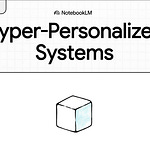The Legacy of “Buy First” Thinking
Not long ago, building your own business software was unthinkable for most mid-market companies. It was slow, risky, and prohibitively expensive.
So businesses turned to packaged software—ERP systems, CRM platforms, and later, SaaS products. These promised faster implementation, lower upfront investment, and "industry best practices" baked right in.
But over the years, the cracks started to show:
Companies paid for platforms that did everything—yet didn’t do exactly what they needed.
They used 30–40% of the features—and paid 100% of the cost.
They twisted their processes to fit “best practices” that weren’t best for them.
They carried the burden of change management not to innovate, but to adapt to software.
Buying software became less about solving problems and more about managing limitations.
The Best Practices that are not for you
Software vendors love to sell “best practices.” But they’re usually just average practices designed to serve the widest market.
They’re built to scale across thousands of customers—not tailored to your business. Adopting them risks diluting what makes your business unique.
You wouldn’t wear a suit off the rack and then change your body to fit it. Yet that’s how most businesses adopt packaged software.
The software (read: API) Supply Chain
The API economy changed everything.
Instead of building everything from scratch, you could now stitch together best-in-class APIs and services:
Stripe for payments
SendGrid/Postmark for transactional emails
Twilio for messaging
Auth0 for authentication
ShipEngine/EasyPost for logistics
Plaid for financial data
Segment/RudderStack for customer data
You could now buy building blocks and build unique systems. It marked the first true "Build + Buy" era.
Today: The Game Has Changed Again
Thanks to modern AI dev tools and infrastructure, building your own business operating system now costs less—or the same—as buying and customizing packaged software.
And the outcomes? Entirely different:
You own your roadmap
You build around your business
No vendor lock-in
You scale on your terms
Your tech becomes a competitive edge
How AI Is Accelerating Custom Software Development
Tools like Tiram.ai, Cursor, Claude, Copilot, and others have drastically accelerated the speed and reduced the cost of development.
They:
Scaffold working prototypes from prompts
Auto-generate boilerplate code
Write tests and documentation
Suggest optimizations in real-time
The result? Custom business software is now practical, fast, and affordable.
But Strategy Still Matters
AI can help you build faster and cheaper. But it won't tell you:
What to build
Why you're building it
How to maintain it over time
That still requires leadership, intentional design, and a strategic roadmap.
Build fast—but build smart.
Our Guiding Principle: Build Your Differentiators, Buy the Rest
Build what makes you unique:
Custom workflows
Customer experience layers
Proprietary data flows
Buy what is standardized:
Payments
Messaging
Authentication
Infrastructure
Use APIs and SaaS platforms as accelerators—not anchors.
Build to Empower, Not Just Operate
Most companies succeed despite their software—not because of it.
Why? Because they shape their business to fit their tools.
But when you build around your processes:
Teams move faster
Customers get better experiences
You remove friction instead of creating it
You stop working around your tech. You start building with it.
Conclusion: It's Not Build vs. Buy. It's Build and Buy Smartly.
The real opportunity today isn’t choosing between building or buying. It’s:
Knowing what to build
Knowing what to buy
And owning your system’s future
You don’t need to settle for off-the-shelf software that sort-of-fits. You can build what your business really needs—faster than ever.
Own your differentiators. Integrate the rest. And scale with confidence.










